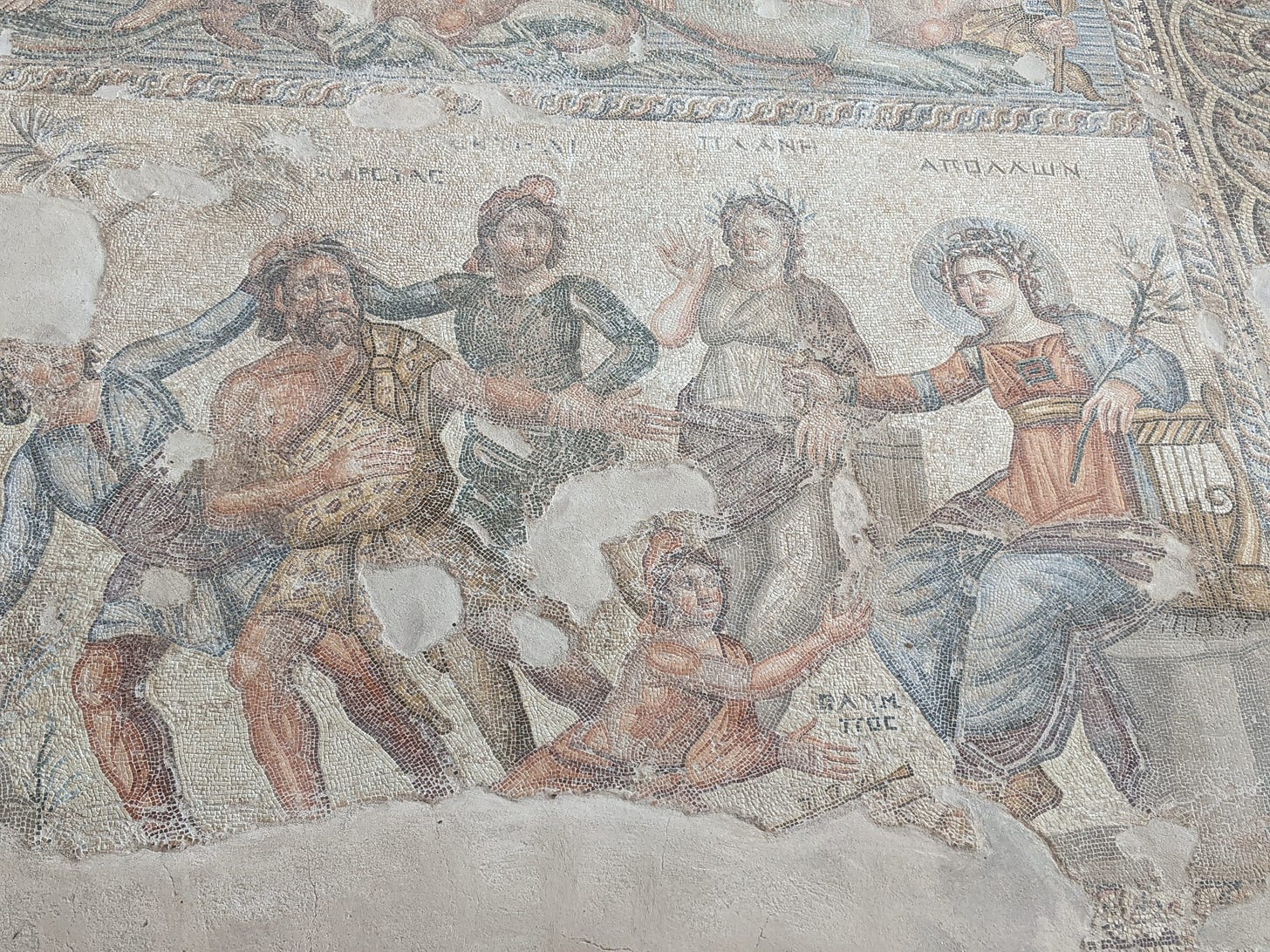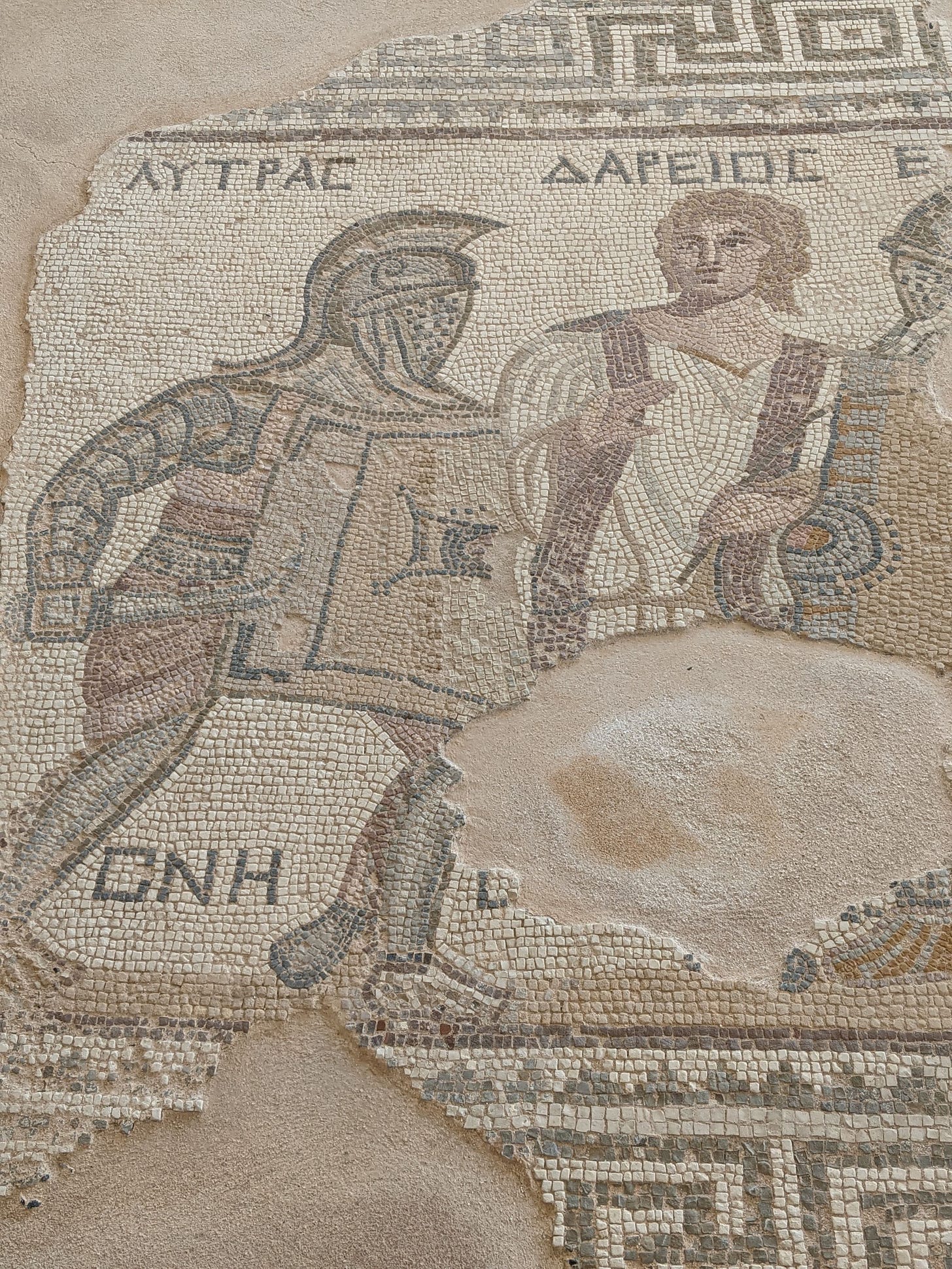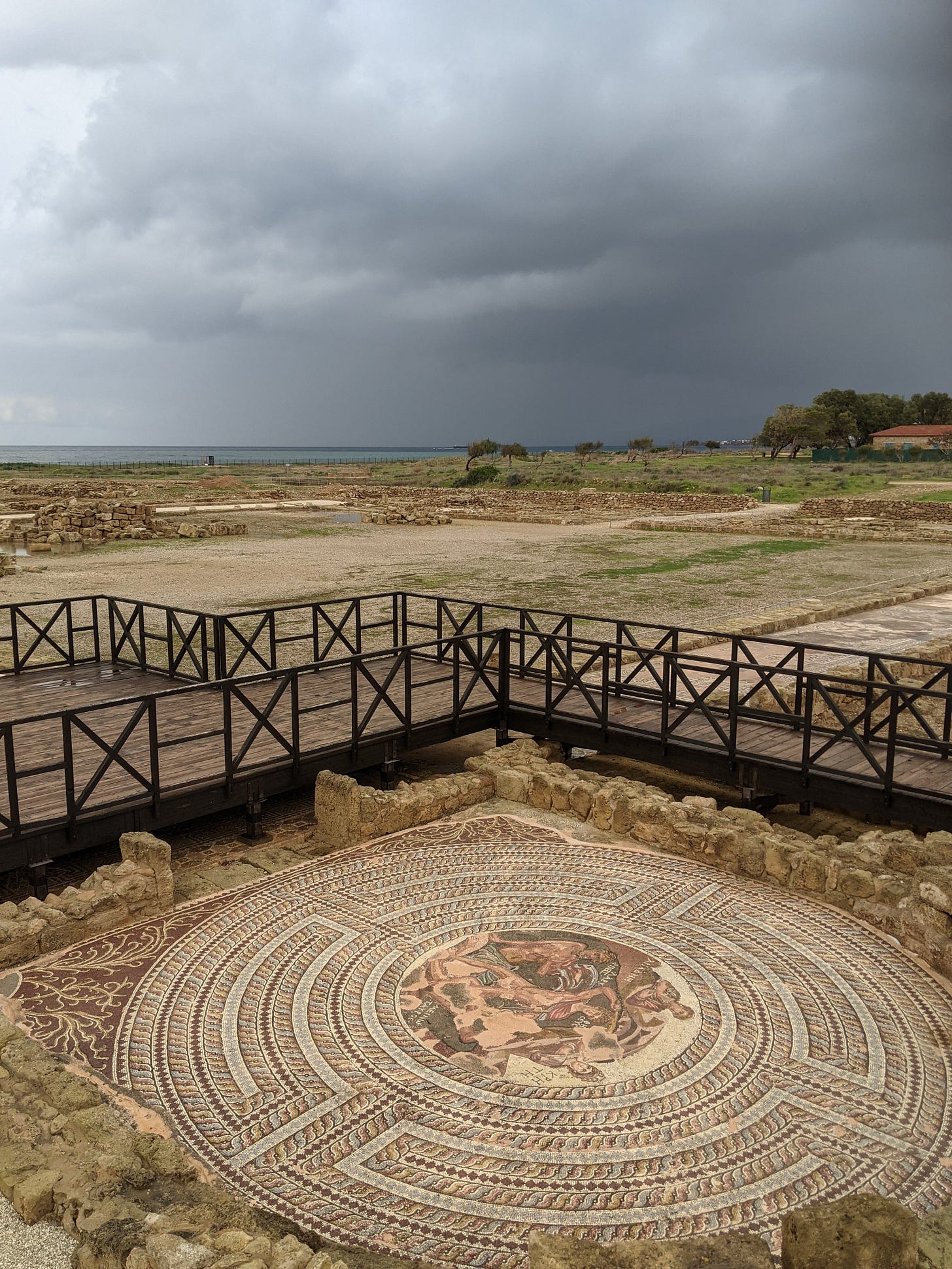Flooring is an important stylistic choice in any home. The choices in modern times often come down to carpeting, hardwood floors, tile, concrete, and God forbid, linoleum.
But for the elaborate villa complexes of the Roman elite, there was just one option: mosaics. Artworks that, with just little colored stones (an individual piece is called a “tesserae”) could animate scenes from mythology or history, or just depict geometric patterns that various cultures, including that of modern American quilters, have used. The more ornate the mosaic, the higher the proprietor’s status.

While wall frescoes were often the cheaper option, the floor mosaic had the advantage in longevity. Sometimes, when an ancient building collapsed, the floors would remain underneath, intact.
Some of the most well-preserved mosaics of the Roman world can be found in the archaeological site of Nea Paphos, once the capital of classical Cyprus. While some of the mosaics at Paphos from the so-called “House of Dionysus” are spectacular—the mosaics next door, part of the Roman governor’s palace, are a cut above and symbolic of the governor’s privileged position in the Roman regime.

Through mosaics, we have a greater insight into Roman art, since the majority of frescoes or other forms of painting do not survive. Whereas the vibrant colors of the exteriors of classical monuments such as the Pantheon in Rome have faded with the sun, the mosaics retain their colored vitality and also help us better imagine that time.
It is important to remember that the villas were not only showcases of art. Roman society was built upon conquest, slavery, and patriarchal conventions. A mosaic of a gladiator in the Cypriot ruin of Kourion forms a sanitized look at the cruel practice of gladiatorial spectacle.
Sometimes mosaics peek out from corners you don’t expect. At the Cypriot ruin of Salamis on the other end of the island, a large bathhouse complex features mosaics hiding in plain sight.
Mosaics capture our imagination by helping us visualize the world two millennia ago, and help us realize that we are just standing on the top of a small layer of humanity, a civilization built on much older foundations.
This is the twentieth post in The Cyprus Files, a limited-run newsletter series from The Usonian chronicling my Fulbright experiences in Cyprus. You can read all the posts in The Cyprus Files here. Thanks for reading, and don’t forget to subscribe so you don’t miss a (free) dispatch from the island of Aphrodite!






